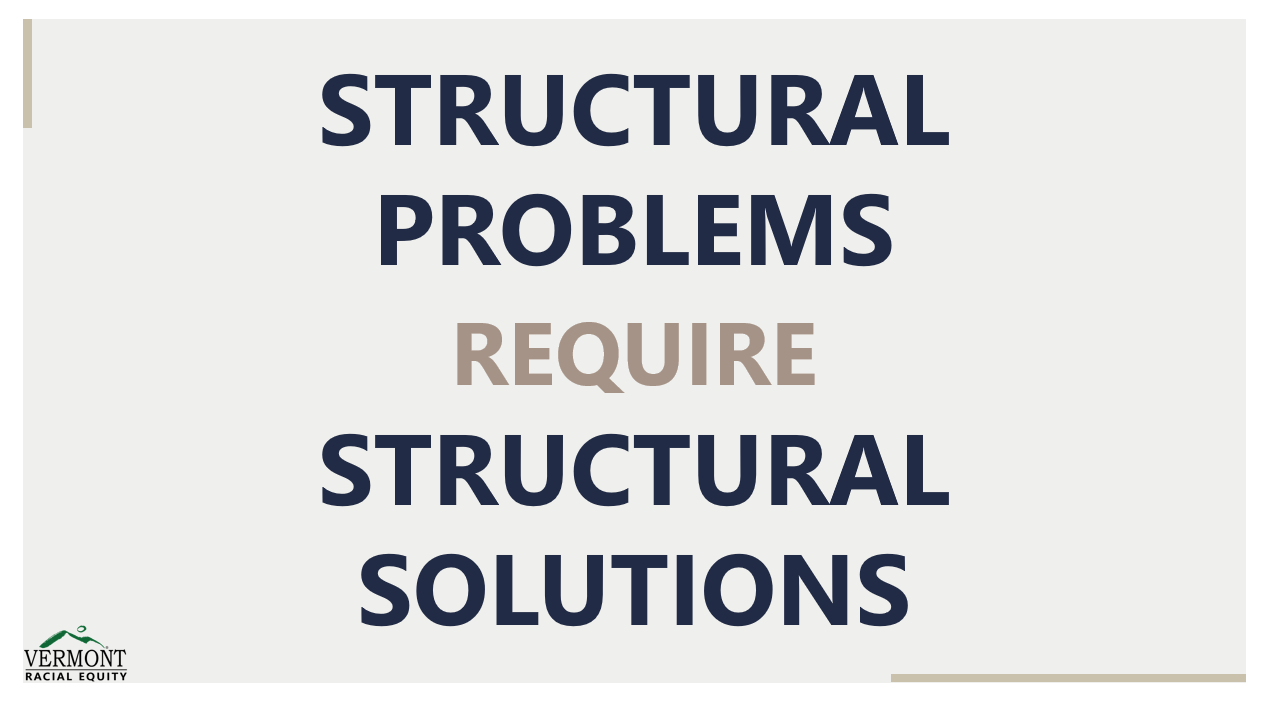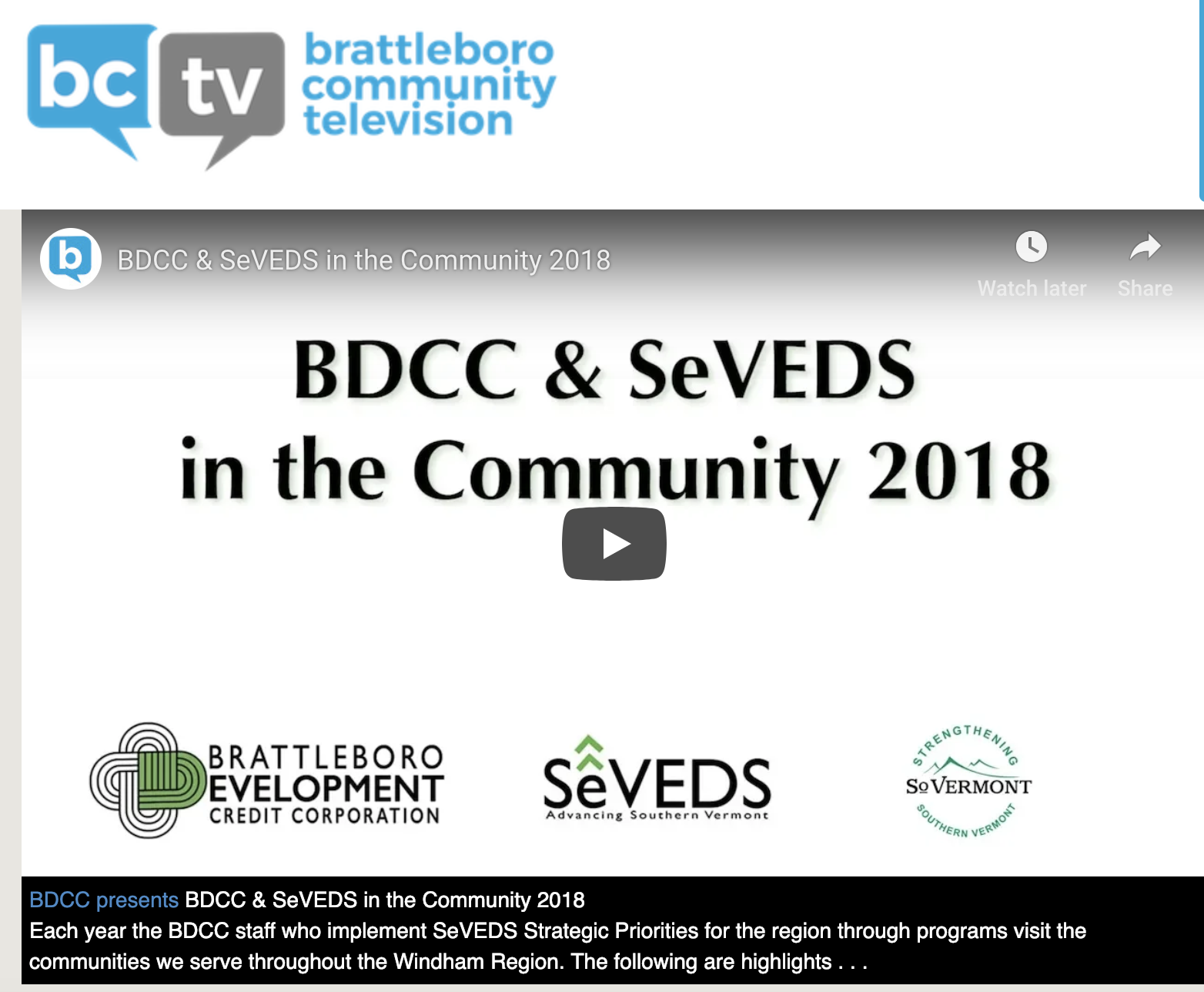
Guest Blog Post: What About the Fence?
A review of the Xusana Davis’ “Applying an Equity Lens to Vermont: Structural Solutions for Structural Problems” session at the Southern Vermont Economy Summit
Interview with Diana Wahle, WSESD Developmental Assets Coordinator and a member of the Community Equity Collaborative of the Brattleboro Area.
The Southern Vermont Economy Summit sessions provided opportunities for learning and conversation across a wide range of topics. To keep the conversation going, we’ve invited guest bloggers to provide insights from their attendance at the summit.
Sarah Lang, who runs BDCC’s USDA RCDI funded Southern Vermont Economy Project, spoke with Diana Wahle about one of the keynote sessions presented by Xusana Davis, the State of Vermont’s Executive Director of Racial Equity. We wanted to get her perspective on the session and what communities can take away from conversations such as these.
——————————————-
SL: Thank you so much for joining me today! I’d love to hear from you about what surprised you most about the session?
DW: Well, first of all, just to say, whenever I hear Xusana, I just feel emboldened. I was just so glad that you had her there as a real major part of the event. Even though I’ve listened to many, many, many of her presentations, I always learned something new. So I like your question!
Thinking back on the presentation there was a quote that she gave, just a theme that was “Letting go does not come easy.” And that stuck with me. I was looking at the Manchester, NH and Boston, MA home loan maps from 1930 that she shared, where if a black family lived in a neighborhood, it was redlined. And then her overlay with the maps of today, and how there has not been much change in those neighborhoods in terms of housing expansion or improvement. I must say, that was surprising. I’m also curious about the restricted deeds in Vermont that she mentioned. I want to know how much they still exist or if there’s any way that those have been closely examined.
SL: If you could tell everyone in our communities, one to two important messages or stories, what are they and why? So essentially, things that you think people need to hear in our communities about what Xusana was touching on and talking about?
DW: I was really glad that she put up the slide on equity versus equality because that is used in entry level diversity education across the board. I just loved the way she just scrutinized it. I appreciated her critique of the illustration: The distribution of the crates is concerning. When you look at race, differences are arbitrary – there is nothing inherent about BIPOC that would make them unequal. Also, everybody’s standing, so the illustration doesn’t address ability issues. And finally culminated in saying, “Hey, what about the fence? Isn’t that the most important thing?” That’s the central problem. I think that an important message is to look at situations that are somewhat superficial and get down to the heart of what is creating difference and creating inequality. Certainly, the fence was something that I held on to. An example that I will talk about for a later question has to do with the governor’s COVID protocol regarding vaccines; he wasn’t getting to the fence. The fence was that BIPOC folks were at times during COVID 10 times more likely to get COVID. And yet, because of their median age, they were amongst the last to receive vaccines. I thought that was a great example of just our governor missed seeing the fence.
SL: And oftentimes, the boxes or the crates are just a band aid to whatever the actual problem is.
DW: Well said!
SL: If you had to sum up the session in one sentence, what would it be?
DW: What really nailed it for me, and I think it’s a follow up to the fence, is “Structural problems require structural solutions”. Don’t be diverted by an individual’s problem – instead, look at the system that the individual is living in. That’s the fence. I liked what she said about not going too fast, not jumping to create a brand new policy, but instead to examine very closely the existing system and how to undo old harms.
SL: What can communities do? Were there action items that Xusana touched on in her presentation?
DW: Xusana’s talk relates to two committees I am involved with right now. One, as you probably know, is the NAACP Health Justice Committee. It’s newly formed, originally was under the umbrella of the Community Equity Collaborative – at the start of COVID, it looked at the race/ethnicity case data over time with community partners (NAACP, United Way, Brattleboro Memorial Hospital) and the Vermont Department of Health. We encourage the VDH data analysts to expand the way they presented race and ethnicity in their VDH website reports.
The health justice committee that’s now coming into fruition is really inspiring to me because it’s holding on to what happened during COVID and saying, “What are we going to learn from this so that we don’t just go back to our old practices with health care and with health access?” So in terms of thinking about structural problems requiring structural solutions, that committee is defining health very broadly we are looking at housing access, obviously health access, also food scarcity and food affordability keeping the “fence” in mind.
The other is back to the governor’s vaccine protocol: It took too long for our BIPOC neighbors have access to vaccines. Eventually, the Governor got the message that vaccines by age were not addressing the needs of the BIPOC population in our state. BIPOC median age is in the 40s, Native American Vermonters median age is like 47. The Department of Health has really been listening and the legislature has been listening. And it’s pretty exciting that the health equity bill was passed that will establish a health equity division of the Department of Health. There will be a community advisory group monitoring it in the next year.
A big part, I think, of what is coming that’s going to be really different systemically is the trust in empowering and funding local organizations. In our region, what happened with the vaccines was the NAACP/Wichie Artu was invited by the Department of Health to develop a whole new approach to getting those that are not trusting or don’t really even know about the vaccine, to become safe and to get vaccinated. I think that that is maybe a practice that can continue in the future in a lot of different ways with health access.
In closing, I found Xusana’s top concerns in her work really interesting:
- Recruitment and hiring of State employees/training of State employees – our Diverse Workforce Development Committee focuses on recruitment and retention – members sharing best practices with each other
- Municipal management – Xusana is pulling together a municipal program that I hope to learn more about.


